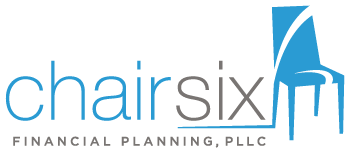
06 Sep Back to School
Summer isn’t officially over for another few weeks, but the kids are back in school, so it might as well be. My Facebook and Instagram feeds are filled with pictures of parents and children on the first day back. Kids look excited and nervous, while parents are overjoyed that school has finally begun!
These first few weeks of September are always chaotic. New schedules, soccer practices, ballet lessons, etc.—so much to do! Though, once the dust settles and you still have that first day of school still in the back of your mind, it’s a good idea to think about the future and what options you have for saving for your child’s education. It’s never too early. In fact, the earlier the better.
I previously wrote a bit about saving college education, so today I wanted to give a bit of an update on what’s changed since the Tax Cuts and Jobs Act (TCJA) became effective in January of 2018 and some planning opportunities around 529 plans. 529 plans are tax-advantaged savings plans or prepaid plans that allow you to save for higher education expenses. One change under TCJA is that funds can be rolled over from a designated beneficiary’s 529 plan to an ABLE account for the same beneficiary or family member. ABLE accounts are designed for certain people who become disabled before age 26.
Another change under TCJA is that distributions from 529 plans can be used to pay for tuition at an elementary or secondary public, private, or religious school. However, these distributions (costs) for k-12 are limited to $10,000 per year on a per-student basis. Consequently, it’s now possible to have multiple funding goals using a 529 plan (i.e., for college or grad school *and* high school). I’m not too excited about using a 529 plan for elementary school simply because there isn’t a whole lot of time for growth and compounding, but it could be something worth looking at.
If you have multiple funding goals for the same child, it may make sense to allocate 529 plan contributions to two separate investment strategies within a 529 plan account. For example, you might choose two separate age-based portfolios, one for high school and one for college. An age-based portfolio will gradually become more conservative as your child ages—generally corresponding to when you’ll need to make distributions from the plan to pay for tuition. However, a word of caution: not all age-based portfolios are equal! The equity exposure within similarly labeled age-based portfolios may differ greatly between two different 529 plans. So, you want to first evaluate whether an age-based portfolio is prudent, then determine your risk tolerance to determine which age-based portfolio and strategy is most appropriate.
Using a 529 plan is a great way to save for your child’s future. They’re easy to set up and operate, they offer great tax efficiency, and the investment options are usually pretty good. Here are some of the things that you should be thinking about when considering a 529 plan:
1). Start early. The earlier you begin saving for your child’s education, the easier it will be. Time and compounding are powerful tools.
2). Don’t be intimidated by the cost of college. While the current and future cost of higher education can be daunting, don’t get discouraged. Most students do not pay the sticker price of attendance, and scholarships and financial aid can help. Your saving goal doesn’t have to be 100% of the cost of attendance. Set an achievable goal, perhaps 25%-50% (or whatever works for you) saved in a dedicated college account. Any shortfall can be met through current income, student loans, grants, scholarships, and financial aid. You may even consider using contributions to your Roth IRA to pay for some of the cost, if it makes sense.
3). Look to see if there is a state income tax benefit for 529 contributions. If you live in a state with a state income tax, consider whether the contributions to the 529 plan you choose will be tax deductible. Some states only allow deductions for contributions to your state’s 529 plan. However, before knee-jerking into your state’s plan solely for the income tax benefit, consider the overall fees of the plan. Perhaps you can find an out-of-state plan with considerably lower fees that will offset your state income tax benefit.
4). Pay attention to fees. The largest drags on investment returns are taxes and fees. 529 plans offer tax deferral and tax-free distributions for higher education costs, so taxes shouldn’t be a concern. But fees matter. There are good plans offered that don’t have account maintenance fees and have investment options with very low expense ratios.
5). Keep at it. Continue saving every month. Dollar cost averaging allows you to buy more when prices are low, and less when prices are high, which will reduce the impact on volatility on your college fund.
A college degree is an investment that will pay back over your child’s lifetime. It’s not for everyone, but for those who do wish to attend, the cost can be overwhelming. Developing a strategy early is critical to maximizing the future value of savings and easing the burden.
If you would like to know more about 529 plans, your options for college savings, or help developing a college education funding strategy, speak with a CPA financial planner today.
______________________________________________________________________________
Originally published 09/06/2019



No Comments